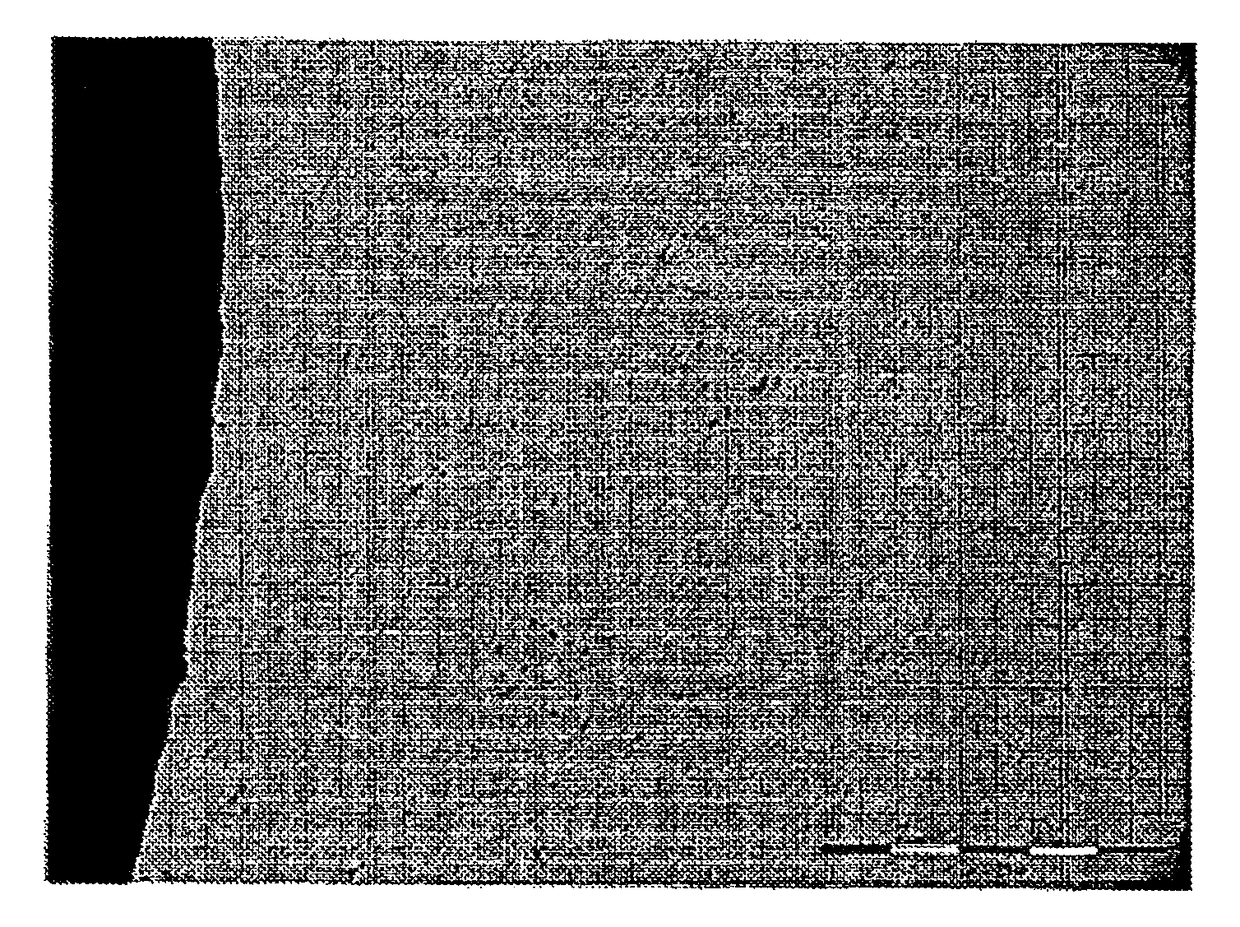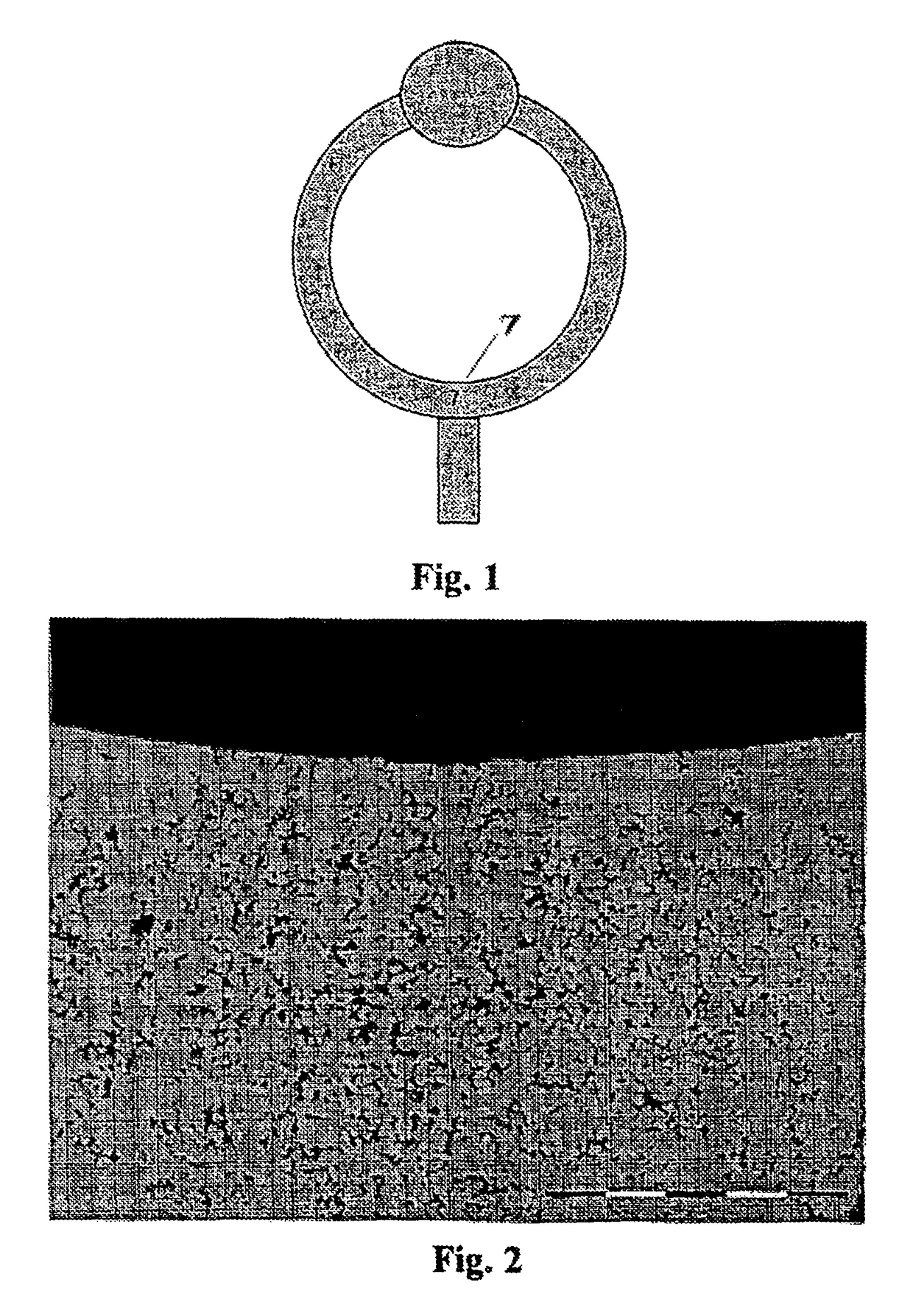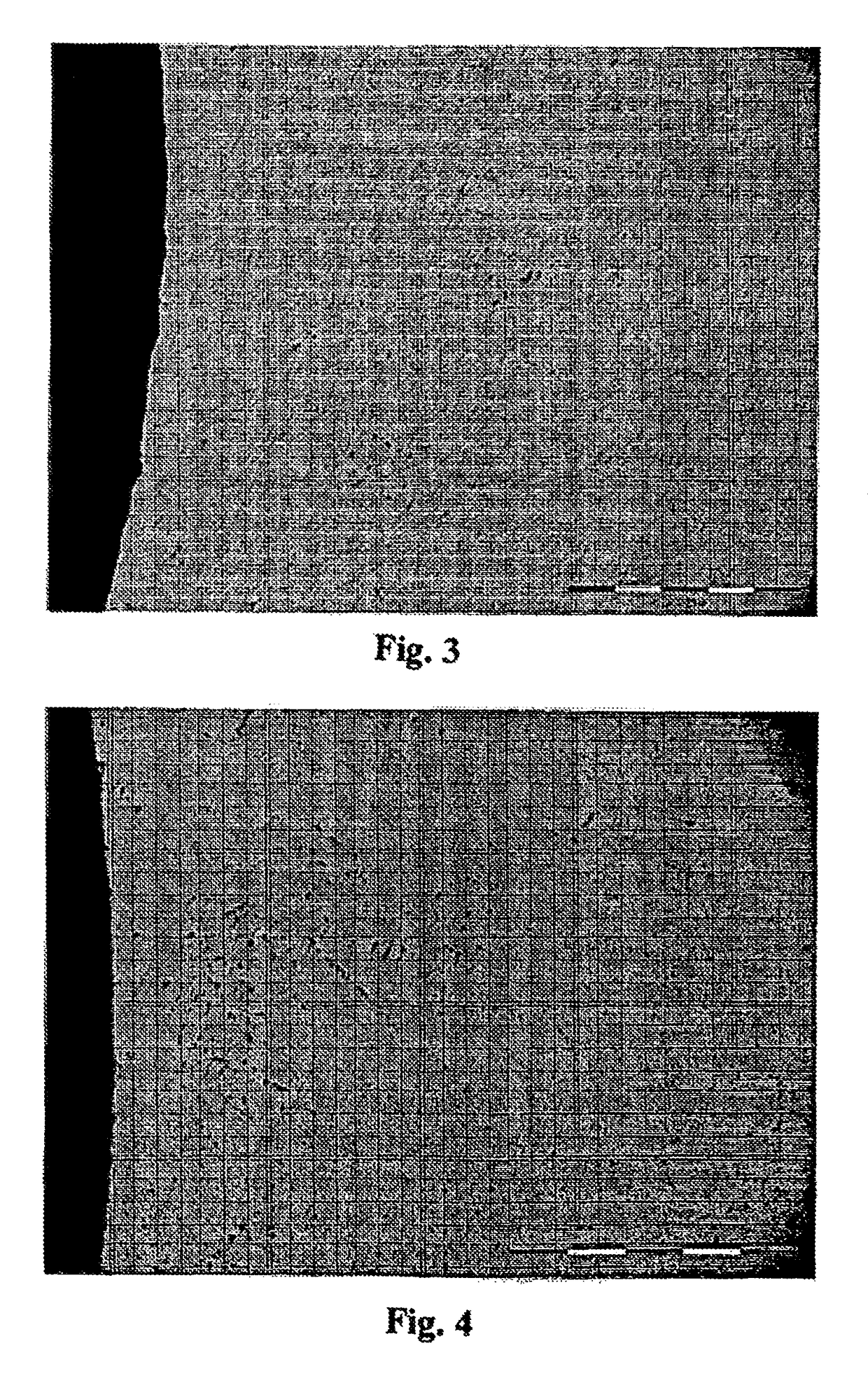Process for investment casting and casting grain for use in the process
a technology which is applied in the field of investment casting and casting grain for use in the process, can solve the problems of excessive oxygen in the casting grain, time-consuming and expensive removal, and affecting the production efficiency of the plant, and causing the loss of silicon and boron
- Summary
- Abstract
- Description
- Claims
- Application Information
AI Technical Summary
Benefits of technology
Problems solved by technology
Method used
Image
Examples
examples 1 and 2
[0081]An embodiment of a 935 alloy (Example 1) has 93.5 wt % Ag, 1.1 wt % Ge, 700 ppm Si, 3-60 ppm e.g. 10 ppm B, the balance being copper. Hardness of the alloy on investment casting depends on the design of the article being cast and on the casting conditions. It is typically about 72 HV if the investment is cast at a temperature of about 950-1050° C. e.g. about 1000° C. into an investment at about 500-600° C. and allowed to cool for one minute in the flask chamber and about 30 minutes in air at which point it will have cooled to about 250° C., after which it is quenched in water. Subsequent heat treatment at about 300° C. / 2 hours can give a hardness of about 97 HV but for many applications may not be necessary as the as-cast hardness is similar to that of conventional Sterling silver.
[0082]An embodiment of a 960 alloy (Example 2) has 96 wt % Ag, 0.4-0.8 e.g. 0.65 wt % zinc, 0.6-0.8 e.g. 0.7 wt % Ge, 500-800 e.g. 700 ppm silicon, 3-60 e.g. 10 ppm boron, balance copper. Hardness of...
example 3
[0085]A quaternary silver-copper-germanium alloy (Ag=94.7 wt %, Ge=1.2 wt %, Cu=3.9 wt % Si=0.2 wt % (added as a Cu / Si master alloy), is prepared by melting silver, copper, germanium and master alloy together in a crucible by means of a gas-fired furnace which becomes heated to a pour temperature of about 2000° F. (1093° C.). The melt is covered with graphite to protect it against atmospheric oxidation and in addition a hydrogen gas protective flame is provided. Stirring is by hand using graphite stirring rods. When the above ingredients have become liquid, pellets of sodium borohydride to give up to 100 ppm boron e.g. 80 ppm are packaged or wrapped in pure silver foil of thickness e.g. about 0.15 mm. The foil wrapper holds the pellets of sodium borohydride in a single group and impedes individual pellets becoming separated and floating the surface of the melt. The wrapped pellets are placed into the hollow cupped end of a graphite stirring rod and plunged beneath the surface of the...
example 4
[0089]A silver alloy is made by melting together 93.2 wt % fine silver casting grains, 1.3 wt % germanium in the form of small broken pieces, 0.2 wt % Si (added as a Cu / Si master alloy containing 10 wt % Si), the balance being copper granules. Melting is by means of an electric furnace which becomes heated to a pour temperature of about 1093° C. (2000° F.) having a melting crucible provided with ports for introduction of stirring gas, and the melt is protected by bubbling a stream of nitrogen gas through the melt to simultaneously effect stirring thereof, the nitrogen also providing a protective atmosphere.
[0090]When the above ingredients have become liquid, small quantities of diborane are added to the nitrogen stream passing through the melt over a period of 1-5 minutes to give a total boron content in the melt of about 50 ppm. The melt is covered with a ceramic fibre blanket to quench any resulting flame from decomposition of the diborane. The hydrogen burns off almost immediatel...
PUM
| Property | Measurement | Unit |
|---|---|---|
| wt % | aaaaa | aaaaa |
| mold temperature | aaaaa | aaaaa |
| mold temperature | aaaaa | aaaaa |
Abstract
Description
Claims
Application Information
 Login to View More
Login to View More - R&D
- Intellectual Property
- Life Sciences
- Materials
- Tech Scout
- Unparalleled Data Quality
- Higher Quality Content
- 60% Fewer Hallucinations
Browse by: Latest US Patents, China's latest patents, Technical Efficacy Thesaurus, Application Domain, Technology Topic, Popular Technical Reports.
© 2025 PatSnap. All rights reserved.Legal|Privacy policy|Modern Slavery Act Transparency Statement|Sitemap|About US| Contact US: help@patsnap.com



